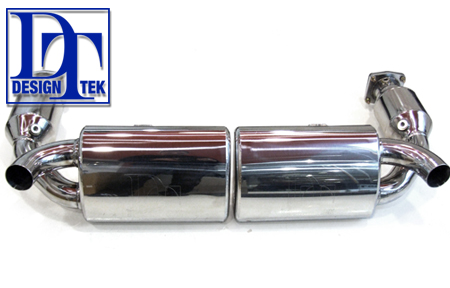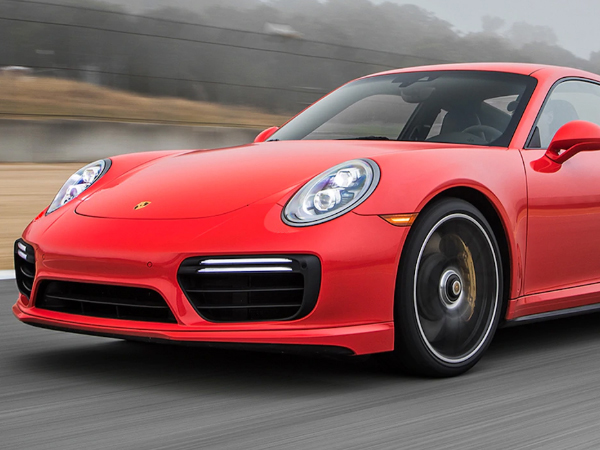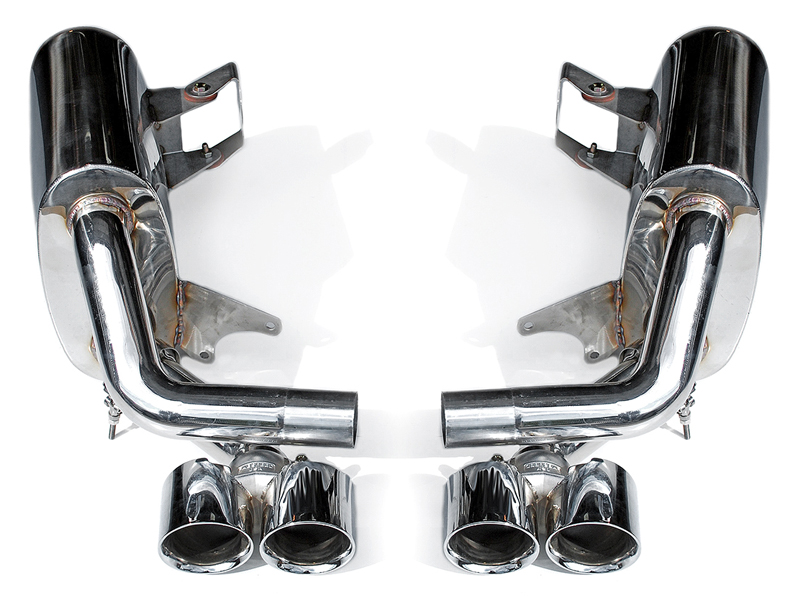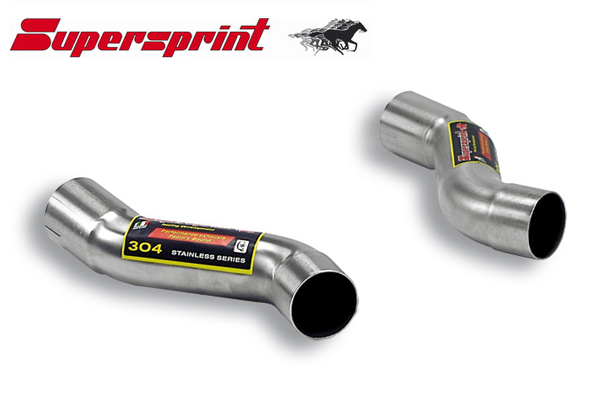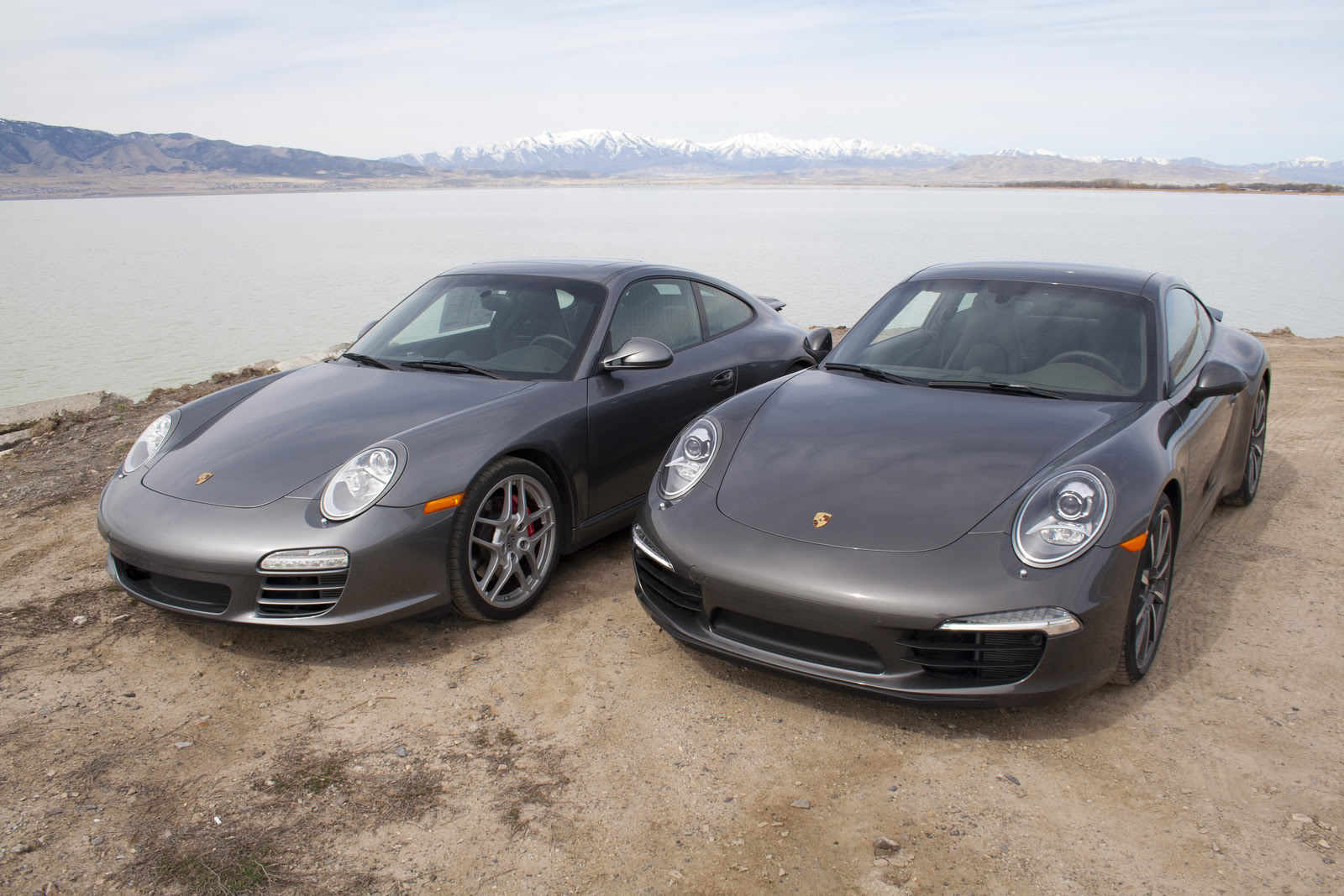
The 997 vs the 991 – which is, relatively, the better car?
The 997 is worshipped within Porsche coteries – it’s gorgeous, fast, suffers from negligible issues (albeit that’s predominantly when going for the newer models variants, post-2007) and makes for a promising investment when you take a peek at the skyrocketing prices. But, when it was replaced with the 991, which was essentially a renewed, smoother to drive, smart(er) 911 curtain-raiser replacement, fans found it hard not to love both.
So what separates the 997 and 991, both statistically and more objectively?
While the two are visually closer than many 911s when put side-to-side with their sister generation, they still hold some stark differences – as to probably be expected with a “completely renovated” flagship introduction.
The first thing you’ll notice if you were to look at the two side-by-side, is that the 991 is longer – sure it’s only by an extra 2.2 inches, but here inches really do make a difference (sorry, fellas); the contrast is somewhat profound mainly because 911s have typically always been short and sporty relative to competitors, so the move to a more Panamera/Cayenne-esque body style is a visible change to any seasoned Porsche buff.

Porsche 991 by David Villarreal Fernández – https://en.wikipedia.org/wiki/Porsche_991#/media/File:2013_Porsche_911_Carrera_4S_(991)_(9626546987).jpg
This is to be expected, however, as, with Porsche producing more SUVs and Panameras than ever, it’s understandable that interchanging parts and looks between new models is preferable from a financial and resource-based standpoint; you only need to look at the first generation Boxster and the 996 to see that Porsche has been doing this for years, albeit on a much larger scale.
On top of this, 911s have been getting bigger and bigger for decades to compensate for the introduction of new aesthetical and internal features. So, this time around with the 991, Porsche has had to understandably remodel the body style to incorporate hefty tech and performance-based promotions that match that of instalments of the same generation.
Like many changes to car models, the look is of course a subjective preference. The increase in length and the move to a cleaner, sharper back and front, while arguably taking away from the original 911 sporty look, does indisputably make the 991 look far more contemporary and leaves the 997 looking somewhat dated – however, considering the ever-increasing popularity of retro Porsches, this is not necessarily a bad thing for the 997 ranges at all.
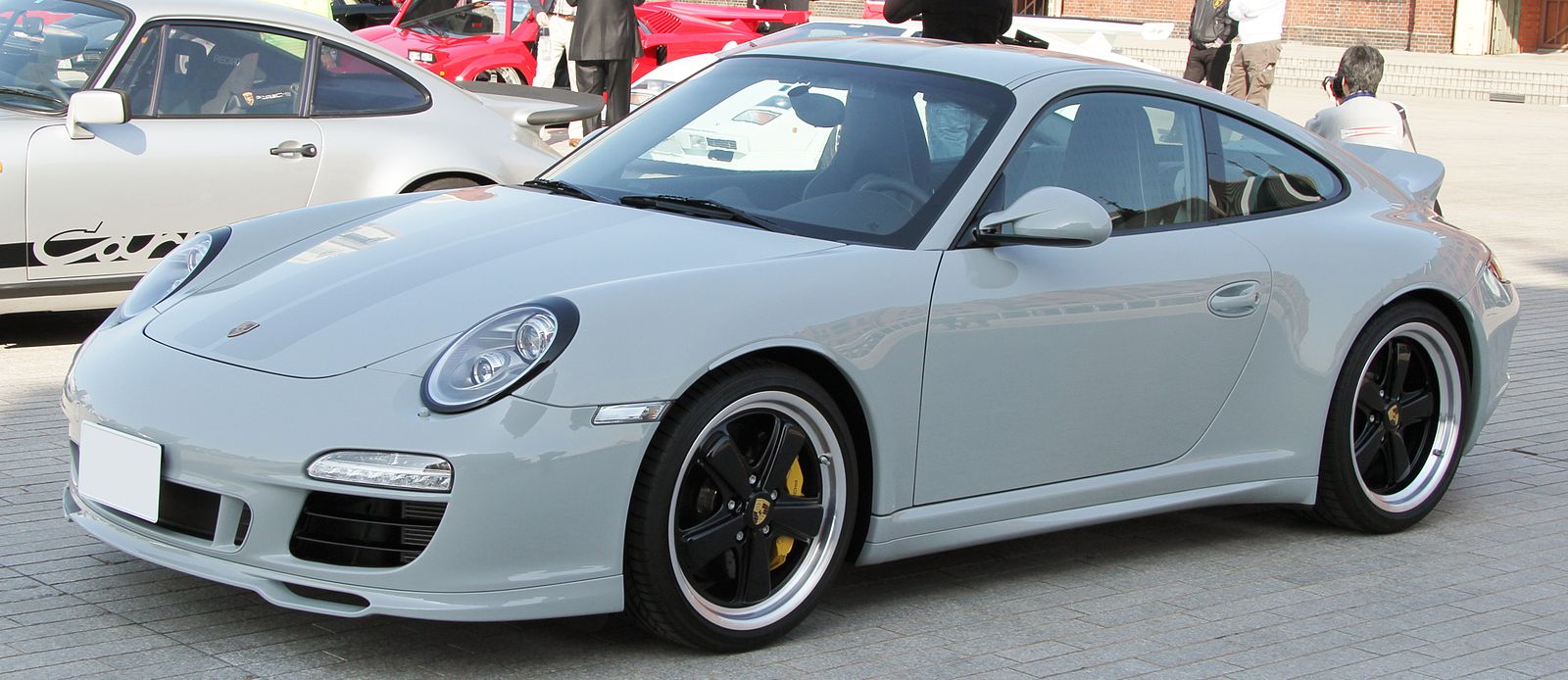
Porsche 997
Other relatively minor aesthetical changes such as the 991’s oval headlights becoming more pronounced, while also seemingly being pushed further to the sides of the car, and its larger wheelbase is unlikely to cause too much of a ruckus in your head when nailing down on a decision between the two, but for patrons of 911s pre-2010, these rather minimal changes may be a step too far into the 21st Century.
A change that is far more pronounced, however, is the difference in the driving between the two. Porsches have always had arguably the strongest road experience on the market, the power-steering, raw sensations and rapid acceleration all make a 911 a 911 – or this is the case in the view of many people. While the change from the 997 and 991 in terms of driving isn’t exactly the end of old-world Porsche driving, the rather extreme refinement of the 991 in this department will be extremely noticeable to owners of previous flagship generations.
In terms of statistics, it’s not all changes in the driving department – but that doesn’t necessarily tell the whole story – for example, a top speed of 174 mph is shared between the two cars. The 0-60 (or 0-62 if you like French measurements like Porsche do) of the 997 and 991 are also negligibly different in terms of timings, however, the 991 will almost certainly feel faster – majorly because of the ~40kg weight shift from the expert use of magnesium and aluminium makes the standard model more lightweight.
This, mixed with other performance features and enhancements like a shift away from power to electric-steering, a 5bhp bump up, an additional 3lb-ft of torque and far smarter energy distribution and money-friendly fuel consumption does make the experience on the road between the two models rather distinct, in our opinion at least.
Why?
Well, when you drive a classic 911, you feel the bare feeling of the road.
While the 991 doesn’t cut this out completely in the slightest and is arguably a far better driver than any of the 911s before it – especially in terms of accuracy, control and speed distribution – we do “miss” the raw, heavier and firmer experience of the 997 when we jump in a 991; the 997 feels more like the classic feeling we all know from Porsche.
This is to be expected, however. Porsche cannot make retro feeling Porsches forever, and, of course, they needed to go more contemporary to match not only the demands of current drivers but also fellow flagship models from competitors.
Have they done the step from the “retro” to the “modern” well with the 991? Yes. It has been done fantastically.
Everything about the 991 feels right if we are looking at the two from the viewpoint of modern automotive companies and similar brand cars. While we concede that it may not necessarily feel “right” if you are an old-school Porsche motorist, after a ride in the 991 you’ll have to admit that the fine-tuning, both aesthetically and in terms of performance, is subjectively really, really good.
When it comes down to picking between the two models, it is really all about personal preference (and budget).
The Porsche 997 is a beautiful Porsche, an absolute classic in every sense of the word and is enjoying a steady price and interest rise for a reason, however, the 991 just feels more well-rounded, more like a modern-day sports car and less like a classic.
At the end of the day, you wouldn’t be disappointed if you won either of these models in a raffle, and the overall choice simply comes down to your driving “sensation” preference, amount of money to spend and, to an extent, aesthetical taste.
While you’re still here, let’s take a look at some of our selected upgrades for both the 997 and 991.
997
Design Facelift Package to 997 MKII
Design Facelift Package to 997 MKII.
Original Porsche 997 2009 Front bumper conversion, also includes grills and lights. For cars with centre radiators.
Kit includes:
– Front Bumper
– Front Bumper Lower Spoiler
– Centre frame
– Left & Right frames
– Left & Right LED Indicator/ Side lamps
– Front Number Plate Holder
– Headlamp Washer Jets
Fits:
When facelifting the front end to the new LED lamps you do not need a lamp control unit just need a good auto electrician to wire up the lamps.
You can shop the upgrade here.
Exhaust Muffler / Silencer Sports System DesignTek
Exhaust Muffler / Silencer Sports System with 200 Cell Imported HIGH FLOW catalytic converters.
Pipe diameter: ?60
DesignTek 997 Turbo Sport exhaust with 200 cell Imported HIGH FLOW catalytic converters. Complete bolt-on system.
Made from high-grade T304 stainless steel. DesignTek 997 turbo exhaust system is designed to give your car a better deeper sound, and fits with the original Porsche Tailpipes or DesignTek Tailpipes.
You can shop it here.
Sports exhaust silencer with catalytic converter
Sports exhaust silencer with reduced 200 cell catalytic converter Porsche 997.1 turbo and turbo S
The component is perfectly interchangeable with the original components, following the instructions in the constructor’s workshop manual
RACETRACK USE ONLY
These components are designed and developed for racetrack use and to maximise the car’s performance. They are not street legal and must be installed by professionals in the sector
CATALYTIC CONVERTER REMOVAL – 200 CELLS
Race catalytic converters have fewer cells than standard factory systems. This reduces exhaust back pressure while still maintaining the operation of the catalytic converter, and improves performance and sound
ECU REMAPPING – FOR PERFORMANCE
On turbo cars, catalytic converter replacement may modify turbocharger operating conditions and cause a deterioration of the torque delivery curve. To ensure full benefit from the new racing component, the engine’s ECU must be reprogrammed to maximise performance. If the engine warning light comes on, the ECU must always be reprogrammed to eliminate it
SOUND – TUBI SOUND
Tubi Sound is the standard sound of Tubi Style exhausts, louder and more powerful than the original sound. This sound represents our brand
END TIPS DESIGN – OE
The muffler must be used in conjunction with the original exhaust end tips
END TIPS NUMBER AND POSITION – 1 + 1 AT THE SIDES
The tailpipes are located low down at the sides of the car. There is one tailpipe at each side
MATERIAL – AISI 304 STAINLESS STEEL
A choice stainless steel ideal for aggressive environments where combustion emissions can cause serious chemical corrosion on other types of metal
EXHAUST FINISH – POLISHED
Mirror finishes are highly reflective and created by polishing the stainless steel. The polishing process enhances appearance and consistency, making cleaning easier. A special rolling procedure is used. It is essential to remove deep scratches as any surface defects will be very noticeable on the finished product. it improves corrosion resistance. The polishing eradicates crevices where corrosive particles can lodge themselves.
MAIN PIPE DIMENSION 60mm
This is the diameter of the main pipe of the exhaust system.
You can shop it here.
991
Facelift Conversion Kit Porsche 991 Turbo to 991 Turbo Gen2
Facelift Conversion Kit Porsche 991 Turbo to 991 Turbo Gen2. For cars with Park Assist, front & rear (I636) and with reversing camera (I638).
For vehicle WITHOUT headlamp washer (I288)
You can find it here.
Maxflo Performance Side Exhaust System
Fabspeed Maxflo Performance Side Exhaust System.
Increase power and save weight with a throatier and deeper exhaust note throughout the RPM range; available with Black Chrome or Polished Deluxe Quad-Style Tips
The 991 Carrera Maxflo Performance Side Exhaust replaces the factory side mufflers, improving the exhaust flow and the overall power while providing a deep and throaty sports car sound. This system can be used with the OEM outlet tips, or can be upgraded to include Deluxe Quad-Style Tips in either Black Chrome or Polished finish.
Fabspeed recommends using these Side Mufflers in conjunction with a Centre Muffler Bypass X-Pipe for non-PSE equipped cars. There is not a significant sound advantage to using these Side Mufflers alone in conjunction with the factory non-PSE centre muffler.
FEATURES:
- Fits all Porsche 991 Carrera vehicles (2012+)
- Designed to be compatible with factory/OEM headers and centre muffler (NOTE: Please call/contact us if you’re interested in combining this system with additional Fabspeed exhaust components.)
- Saves 1 lb versus the factory components
- Improves sports car sound and power throughout the RPM range; 15 whp and 11 ft-lbs of torque
- Constructed from high-quality 14-16 gauge C.N.C. mandrel-bent T304L stainless steel for optimum flow and maximum durability
- Direct bolt-on replacements for the factory side mufflers
- Compatible with Fabspeed’s Deluxe Quad-Style Tips in Polished or Black Chrome finish for most models); also compatible with OEM tips
You can find it here.
Exhaust Exit Pipes Kit
Supersprint Exhaust Exit Pipes Kit (Left and Right) for OEM End Pipe. Alternative to 247346-26.
Fits:
Porsche 991 (911) Carrera 2S 3.8L (400 Hp) 2012>>
Porsche 991 (911) Carrera 4S 3.8L (400 Hp) 2012>>
To be installed as a kit with 247334-04.
NOTE:
* With EEC Homologation
* Fits to the OEM Catalytic Converters
You can find it here.
Have any queries about parts for your Porsche 944 or need some more information about the upgrade that’s right for you?
Don’t hesitate to contact us, visit our shop to see items on offer or enquire about our services – we’ll be happy to help with all manners of Porsche!

